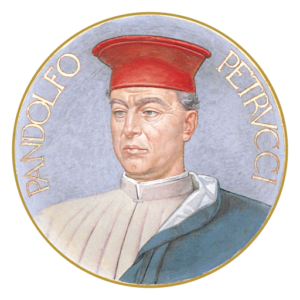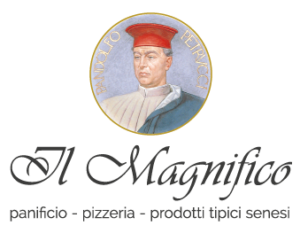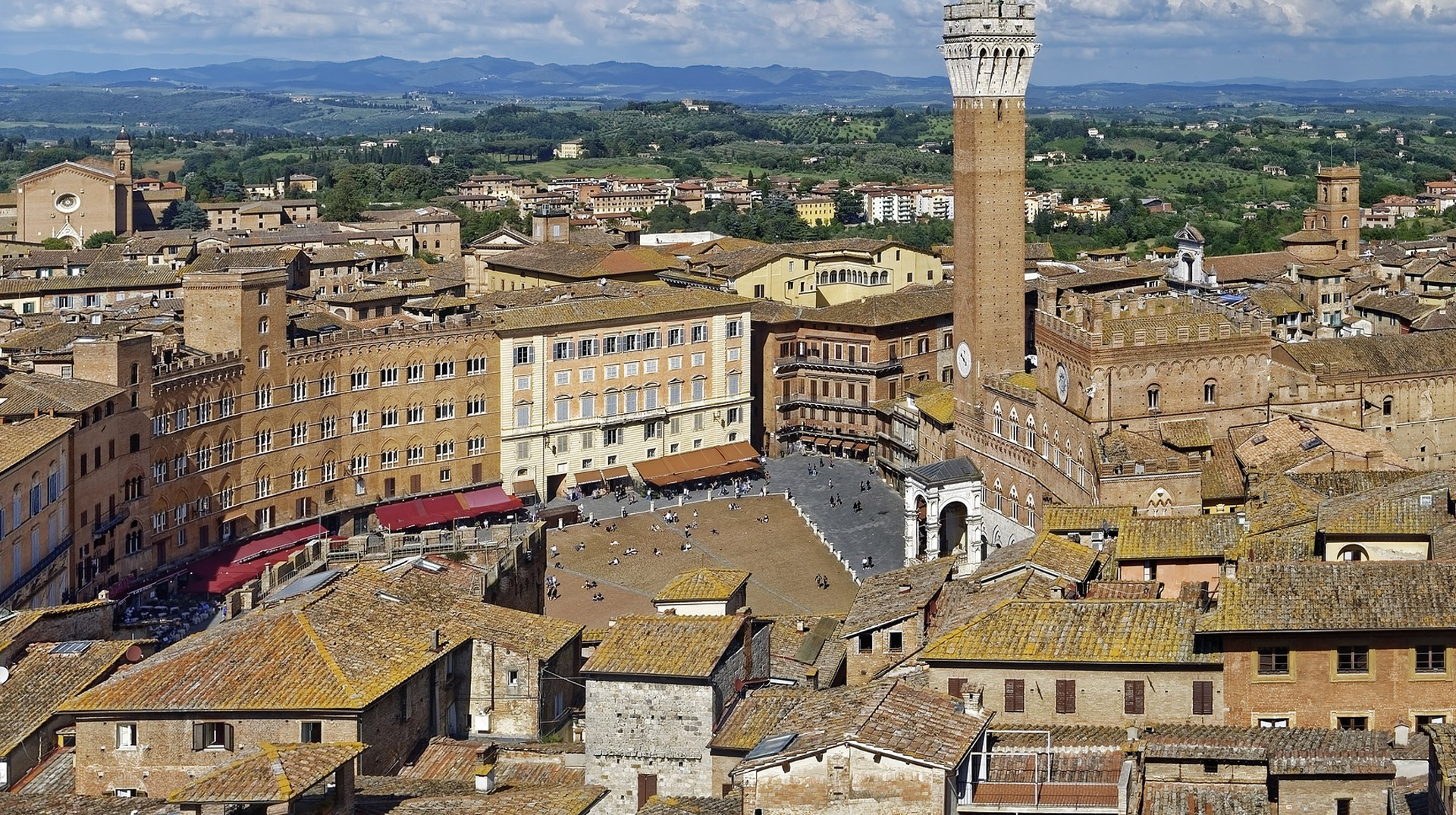The city of Siena
A bit of History
City at 322 metres above sea level in the eastern foothills of the Colline Metallifere mountains.
Roman military colony (“saena etruriae”; or “sena lulia”), later governed by Lombard gastalds (royal administrators) and then Frankish counts, became a free municipality in the 12th century.
In 1179 the external expansion began which caused the first conflicts with Florence.
Faithful to Frederick II, Siena became the centre of the Ghibelline party in Tuscany and inflicted, with its allies, a serious defeat on the Florentines in Montaperti (1260).
These, after the Ghibelline collapse, took their revenge at Colle di Valdesa (1269).
With the Ghibellines gone, from 1287 to 1355 a Noveschi government held power, which pursued a Guelph policy and friendship towards Florence.
This period of peace brought great prosperity and a remarkable artistic development of the cities.
Il Magnifico
PANDOLFO PETRUCCI
 In 1487 (1487-1512) Pandolfo Petrucci, having established a government that represented all the orders, tried to found a principality: the inability of his successors caused the plan to fail (1523).
In 1487 (1487-1512) Pandolfo Petrucci, having established a government that represented all the orders, tried to found a principality: the inability of his successors caused the plan to fail (1523).
The Pope and the emperor interjected, Siena effectively lost its autonomy; after the last proud resistance to the Florentines, who had besieged it (1554), and the ephemeral survival of the republic in Montalcino until 1559, it passed to the Medici.
It is one of the most distinguished art centres in Tuscany, and retains its medieval appearance with the famous Piazza del Campo, the Palazzo Pubblico and the gothic Torre del Mangia, over 100 m high.
Other Gothic examples include the cathedral (begun in the 12th century in romantic forms), the 14th century churches of S. Domenico and S. Francesco, the Tolomei palaces (the oldest, 13th century), Salimberni (13th century), Chigi- Saracini (14th century, seat of the Chigiana musical academy), Bonsignori (15th century, seat of the National Art Gallery).
Renaissance examples include the Loggia della Mercanzia (15th century), the Piccolomini palace and the Palazzo del Magnifico, and the church of S. Martino.
The splendour of the communal era is relived twice a year, in the days of the Palio (in July and August), when the representatives of the 17 districts parade in the Piazza del Campo with their beautiful costumes and banners.
Republic of Siena Republic established in 1487 after a period of tumultuous political changes, resolved with the election of a General Council and a government (balìa), who managed to restore social peace by entrusting noble powers to Pandolfo Petrucci, head of the nobles. The struggles between factions resumed at the beginning of the sixteenth century involving the Pope, Spain and the emperor, who relied on the Medici of Florence. Backed by Spain, it was finally ceded by the Spanish king Philip II to Cosimo I de’ Medici (1557), except for the five ports that formed the State of the Presidia. When the Medici dynasty died out, Siena passed under the dominion of the Habsburg-Lorraine (See Grand Duchy of Tuscany).
Sena Etruriae, this was the name of the first nucleus of the city, became Roman in the Republican period and was a military colony in the Augustan age with the name Sena Julia. However, the city began its rise during the Lombard domination, therefore, after the government of the Franks and the supremacy of the bishops, it gave itself municipal regulations, was governed by consuls from 1147 and later by podestà and captains of the people. On the side of the Ghibellines, it enjoyed privileges from the empire and was able to expand its trade and banking activities in Italy and Europe. It led a bitter struggle against Florence and its Guelph allies which culminated in 1260 with the victory of Montaperti, followed in 1269 by the defeat of Colle di Val d’Elsa inflicted on it by the Florentines and by Charles of Anjou. During the Guelph government, called “Noveschi”, a period of peace with Florence followed until 1355, during which the most famous monuments of the city were erected. After over a century of political instability and the lordship of the merchant Pandolfo Petrucci (1487-1512) Siena fell under imperial influence until, in 1555, after a terrible siege, it was conquered by the army of Charles V and Cosimo de’ Medici . The territory of the Sienese Republic was thus annexed to the Grand Duchy of Tuscany (1557), with whose fate its was thenceforth entwined.
Pinturicchio Also in Siena, between 1508 and 1510, he painted the frescoes in the palace of Pandolfo Petrucci.




